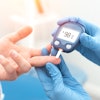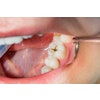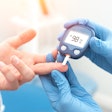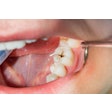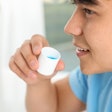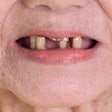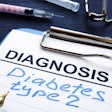Gum disease may be linked to gestational diabetes mellitus (GDM) in women of childbearing age, according to a study recently published in BMC Oral Health. Systemic inflammation may play a central role in this connection.
Furthermore, a dose-dependent relationship was found between clinical attachment level (CAL) and the presence of GDM, the authors wrote.
“Women with periodontitis had a higher risk for GDM compared with non-periodontitis,” wrote the authors, led by Jing Cheng of the Zhongnan Hospital of Wuhan University in China (BMC Oral Health, July 16, 2025, Vol. 25, 1179).
GDM is a form of glucose intolerance first identified during pregnancy. Previous studies suggest that periodontitis may contribute to GDM. Periodontitis lesions release bacterial byproducts and proinflammatory cytokines into the bloodstream, raising systemic inflammation. This study aimed to examine the link between periodontitis and GDM and the potential role of inflammation in this relationship.
This study analyzed data from 5,283 women ages 20 to 44 using the U.S. National Health and Nutrition Examination Survey. Participants were grouped into three categories: nondiabetes, diabetes, and GDM. Periodontitis was categorized into four levels, including none, mild, moderate, and severe, based on CAL and probing depth (PD), they wrote.
Only women who reported being diagnosed with diabetes during pregnancy were classified as having GDM. Inflammatory biomarkers such as white blood cells, lymphocytes, monocytes, and platelets were assessed, and the platelet-lymphocyte ratio and monocyte-lymphocyte ratio (MLR) were calculated to explore inflammation as a potential mediator.
Participants with periodontitis had a 1.68 times higher risk of developing GDM compared to those without periodontitis. CAL was also significantly linked to increased GDM risk, with each 1-mm increase associated with a 1.5 times higher risk. Additionally, linear regression showed positive associations between periodontitis and hemoglobin A1c (HbA1c) levels, as well as between CAL and HbA1c, they wrote.
White blood cell count, monocyte count, and MLR were found to mediate the relationship between periodontitis and GDM, accounting for 5.02%, 5.88%, and 5.2% of the effect, respectively. Similar mediation effects were also seen in the link between CAL and GDM.
However, the study had limitations. The cross-sectional design of the data did not allow the study to determine causality, the authors wrote.
“Obstetric providers should pay attention to oral health evaluation in all pregnant individuals, particularly those with GDM,” Cheng and colleagues wrote.


